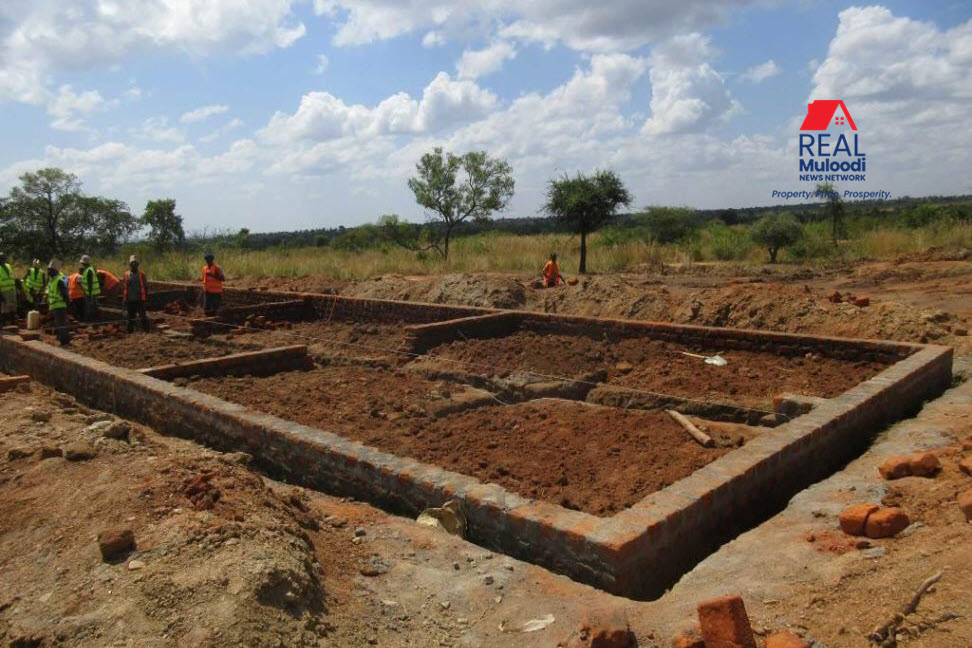UGANDA, Mukono | Real Muloodi News | The strength of a building lies in its foundation. The foundation must be built such that it holds the structure above it and keeps it upright, resists movement of the earth around it, as well as keeps the ground moisture from seeping in and weakening the structure.
Idris Nsereko, an architect, working with 3M Design and Construction, recommends working on the slab early to make the outer structure stronger; otherwise, the house could collapse without a firm foundation.
“The components we use in constructing the slab, such as the wire mesh, hardcore, and iron bars, help to hold the slab together in case of natural disasters,” he says.
Different foundations are better suited to accommodate certain kinds of structures and terrain. For instance, a house on the beach or on a slope will require a raised foundation built on concrete or steel pilings. Whereas a concrete slab foundation may work well in dry areas, but it is not the best choice for a house built at the beach.
Strip foundations can be used for most subsoils, but are particularly suitable for soil which is of relatively good bearing capacity. They are particularly suited to light structural loadings such as those found in many low rise domestic homes.
This article explores the technical procedures that must be carried out when laying a strip foundation to ensure a strong and lasting building.
Mind the Building Laws
Before you begin, check with authorities to ensure that your building complies with local guidelines. In some areas, your building has to stand at least 1.5 metres from the boundary line of the plot.
Clear the Site
Remove any vegetation, rubble, and debris from the site before any construction. Look out for tree trunks and stagnant water. Standing water may compromise your drainage.
Dig up Trenches
Identify the positions of the load-bearing walls, and excavate the site at these positions in the form of a trench. The trench should be central to the wall above. The size and position of the strip is directly related to the overall width of the wall; recommended to be three times the wall width.
The landowner should supervise this part of the excavation to ensure consistency with building plans and quality construction. If your foundation is not up to scratch, the entire building will be at risk.
Footing
Prepare and mix concrete for the footing. Look to have at least 600 millimetres width by 200 millimetres of thickness.
Foundation Wall
Also known as a “plinth level,” the foundation wall emerges from the concrete strip footing and rises to the height of the slab. Follow the building plans to see what dimensions your plinth wall should have.
Damp-proofing
The damp-proofing membrane comes next. It prevents ground water from finding its way to the slab.
Other Layers
A reinforcing mesh, such as BRC mesh, should form the next layer. Pour the concrete over the mesh according to the building plan.
Backfill
You can refill the area within the foundation wall with the same soil you removed during excavation. You can ferry soil from elsewhere for this purpose as well. Compact the soil firmly, perhaps spraying water on it to facilitate this.
Apply a layer of hardcore filling to the compacted soil and a layer of sand on top of the hardcore filling. Ensure that you have a smooth level.
There are other procedures to follow in setting up a firm foundation that have not been covered by this article. Soil testing, termite treatment and establishing a ground beam are among them.
Every construction site will need to be carefully assessed by an expert, and may require different procedures and approach. Consult an architect or structural engineer as you proceed with building. You can find one one local to you on Real Muloodi’s Industry Directory.
READ MORE LIKE THIS:
https://realmuloodi.co.ug/which-is-better-for-you-home-concrete-slabs-or-concrete-pavers/



